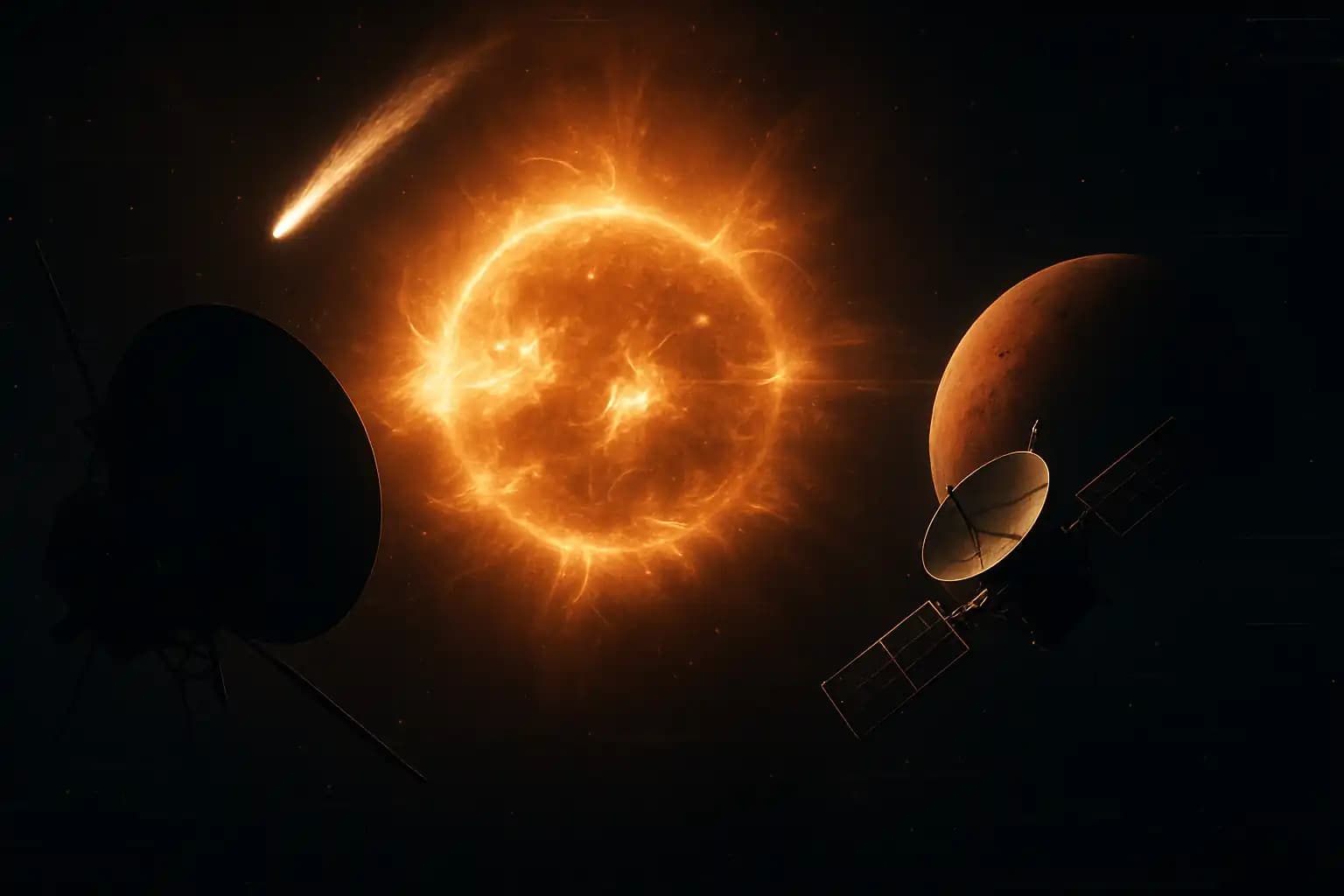Every era has its cosmic controversy. In 2025, the riddle around 3I/ATLAS stands prominent—it is the third confirmed interstellar object to visit our solar system. As the comet swung behind the Sun for its October 29 perihelion, the internet predictably ignited with accusations of NASA cover-ups and calls to “release the photos.” The truth is less sinister and highlights how science and modern mistrust interact when social media meets astronomical events.
Why the Public Can’t See 3I/ATLAS at Perihelion
Despite the hype, the science is straightforward: during perihelion, 3I/ATLAS positioned itself directly behind the Sun from Earth’s viewpoint, making it invisible to ground-based telescopes. This geometry is cosmic luck, not a conspiracy. However, Universe Today notes that various space-based observatories, including SOHO, PUNCH, and JUICE, tracked the comet during this solar transit. This ensures scientists can still obtain essential images, even if instant public uploads aren’t always feasible. New Hubble and JWST data, plus images from Mars orbiters, affirm that science is moving forward, not harbored in secrecy.
The push for transparency echoes past debates found in archival analyses. These discussions reveal how digital FOMO clashes with the realities of slow data processing and peer review.
NASA Secrecy Claims: Data Delays vs. Deliberate Obfuscation
Public impatience surged. Some, like Harvard astronomer Avi Loeb, questioned whether NASA was “withholding data” about unusual features like chemical outgassing and speculative technology origins. According to The Economic Times, claims emerged that NASA’s Mars images hadn’t been released, with some suggesting delays indicated something extraordinary. Internal memos, revealed in leaked documents, expose technical challenges, such as corrupted telemetry and incomplete data sets—hardly a men-in-black cover-up. As seen in debates over solar-system anomalies, the caution favored by science often clashes with expectations of the digital age.
Those observing deeper secrecy elsewhere cite technological silence in UFO investigations near Area 51 and defense issues, including nuclear protocol reporting.
The Data So Far: Imaging, Chemistry, and Anomalies
Contrary to rumors, NASA and global partners have released fresh 3I/ATLAS data. Hubble, JWST, and GOES-19 satellite images show a teardrop-shaped coma and a Sun-facing plume. As reported by Space.com, perihelion saw intense monitoring with spacecraft designed for ultraviolet and infrared spectroscopy. Chemistry reports confirm abundant carbon dioxide, traces of water vapor, cyanide, and atomic nickel—fuel for those intrigued by extraterrestrial anomalies, yet consistent with interstellar comet expectations. The hyperbolic trajectory, shape, and absence of mini-probe “gifts” suggest the science remains what it is: science.
This data influences defense analysis and astronomer modeling, with insights applied to asteroid network protocols and galactic alignment reports.
What It Means: Trust, Transparency, and Space-Age FOMO
Ultimately, the NASA-3I/ATLAS photo controversy reflects a timeless dilemma: the need for instant answers versus the rigor of methodical science. Even with FOIA-enabled insights into NASA’s communication challenges, no evidence of a deliberate visual blackout has surfaced—only the usual process of data verification, agency policies, and inevitable delays. Meanwhile, pop scientists and public skeptics emphasize that the push for transparency is vital, and institutional inertia can mimic secrecy, even when unintentional.
The case of 3I/ATLAS serves as a cosmic reminder: the universe does not await our upload speeds or patience. For clear-headed analysis, free from intrigue, watch Unexplained.co and observe the ongoing scientific evolution in our era of space exploration and headline-driven urgency.




